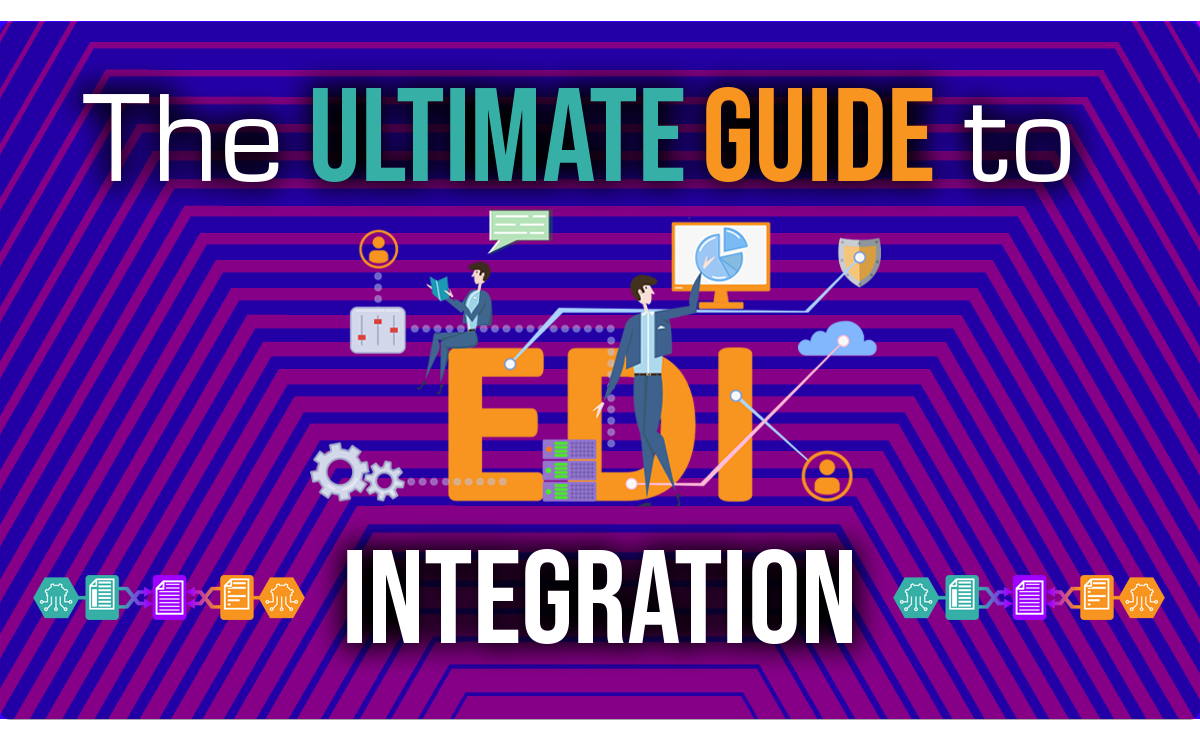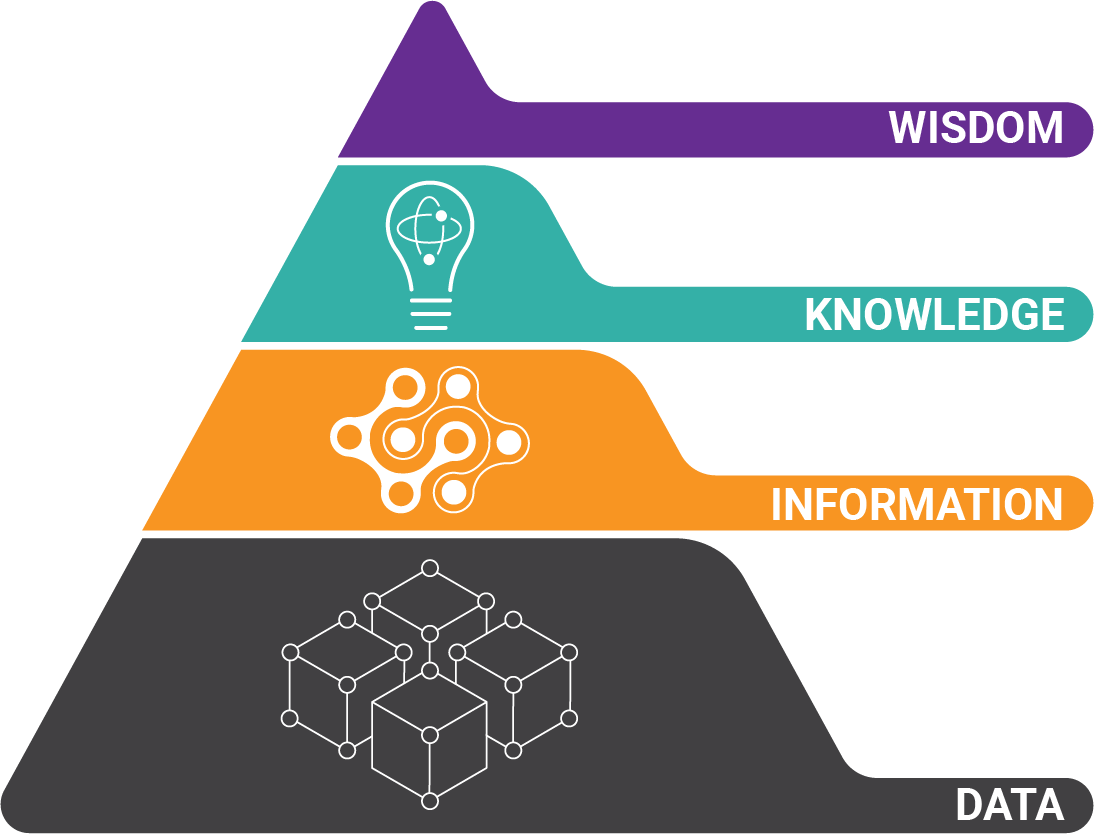Let’s face it, we know the need for EDI integration isn’t going away anytime soon.
Whether you’ve been self-managing your own integrations, find yourself in need of a new solution, or are totally new to the world of EDI, the question of in-house vs outsourced (or a mixture of both!) is a long-term, high-impact decision.
8 Important Things to Know About EDI Integration:
- What is EDI?
- What is EDI Integration?
- Examples or Every Day Use Cases of EDI Integration
- Types of EDI Integration
- Benefits of EDI Integration
- Do you even need EDI - are there alternatives?
- What's the business value of integration?
- What Software Supports In-House EDI Integration?
1. What is EDI?
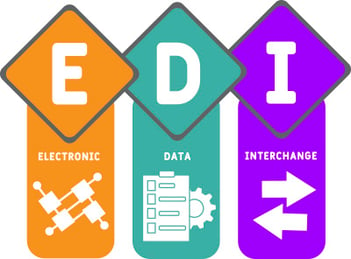 Simply put, EDI (electronic data interchange) technology enables a computer-to-computer transfer of business documents between different trading / business partners in a standard electronic file format instead of using a paper document workflow.
Simply put, EDI (electronic data interchange) technology enables a computer-to-computer transfer of business documents between different trading / business partners in a standard electronic file format instead of using a paper document workflow.
There are many advantages to using an EDI technology workflow, such as:
-
Eliminated manual data entry errors
-
Far faster document processing, exchange and conversion
-
Reduced costs, as a result of far less manual work and less work correcting errors
-
Better relationships with business partners and customers
Many vertical industries use EDI to streamline their business operations, such as healthcare, technology companies, government agencies and insurance. We have extensive experience with helping the top healthcare technology companies with integrating their EDI files. Read more about how we help healthcare claims processing companies.
Get Our Free Demo Video
on EDI Data Integration & Extraction!
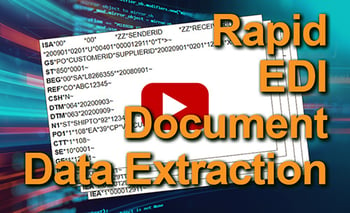
This is how you can easily integrate EDI data into your business systems and worfkows. In this video, you will see how we are helping enterprise-size businesses eliminate all manual EDI data entry and automate these processes.
We can help you improve revenues and save substantial time! Get the Video:
2. What is EDI Integration?
EDI integration is the process of developing an entire EDI workflow between data trading partners. The main aspects of EDI integration are:
-
Who? Determine the trading partners with which you are going to be transferring business data.
-
What? Know exactly which EDI documents or files are you going to be exchanging with your trading partner.
-
How? Settle on which protocols and technologies are going to be used to send messages.
-
Where? Know the endpoints (or IT systems) needed to transfer and process EDI data. For example, which data integration software, ERP, or sales system will be used?
-
Which? Determine which EDI standards and formats (X12, ANSI, XML, EDIFACT) the files need to be in.

Once the main aspects are decided, data files are converted and normalized into a file standard determined by both companies (as the diagram above shows).
Once a business gets files from their partners and the files have been converted via EDI technology, the business can now use those files as they are in a native, standard format. EDI integration can be performed in-house, or it can be outsourced with a specialist or company who performs software as a service.
3. What are Some Examples or Every Day Use Cases of EDI Integration?
Here are just a few of the ways that EDI integration is being used by companies in every industry:
- Insurance: Explanation of benefits data, claims processing and remittance
- Accounts payable: Purchase order processing, tracking, reporting and changes
- Finance: Invoice reporting and processing. EDI 810 are used for this application
- Shipping: Ship notices, freight details, bills of lading, payment adjustments
- Inventory: Product inventory changes, schedules, advice or transfers
4. What are the Types of EDI Integration?
We have experience in integrating EDI in many companies' data workflow, and there are basically three flavors of integrating this solution:
- Direct EDI Integration
 As you may guess, a direct EDI integration includes making a direct connection from one company's internal ERP system to their business partner's system using a specific protocol (such as FTP). It is an internet connection that can connect to business partners like a customer, supplier or even a service provider.
As you may guess, a direct EDI integration includes making a direct connection from one company's internal ERP system to their business partner's system using a specific protocol (such as FTP). It is an internet connection that can connect to business partners like a customer, supplier or even a service provider.As a result, this form of integration ends up with a business managing every individual connection that a partner has, eventually resulting in thousands of connections. This can be a very complex undertaking without using a standardized protocol.
As this type can handle a very large amount of connections, direct EDI integration is a good choice for a scenario that involves a great number of integrations with lots of data being moved back and forth.
- Indirect EDI Integration
 An indirect EDzvI integration is orchestrated by using a different type of connection, like an external EDI value-added network (VAN) or other version of broker to move files between a business' ERP and their customers, suppliers or third-party logistics group.
An indirect EDzvI integration is orchestrated by using a different type of connection, like an external EDI value-added network (VAN) or other version of broker to move files between a business' ERP and their customers, suppliers or third-party logistics group.The first step in this version of EDI integration begins when the message and / or specific files are transferred from their ERP system to the VAN or broker.

Then, the broker receives the message, converts the message or files into the various formats preferred by their suppliers or customers. Finally, the broker sends the message and files to the end customers or suppliers. - Hybrid EDI Integration
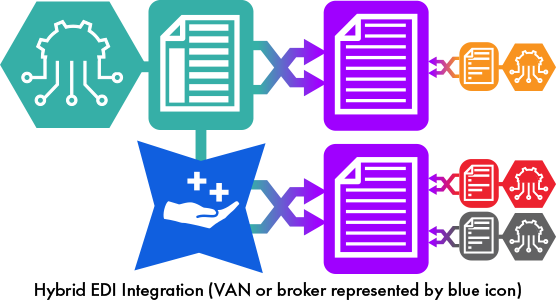 As you probably guessed, a hybrid EDI integration is a mix of direct and indirect EDI integration. Some businesses like using this approach because they can directly connect, communicate, and transfer EDI files with their most important customers or suppliers.
As you probably guessed, a hybrid EDI integration is a mix of direct and indirect EDI integration. Some businesses like using this approach because they can directly connect, communicate, and transfer EDI files with their most important customers or suppliers.Meanwhile, they can use a VAN to handle EDI transfers the rest of their customers. This method of integration needs a business to be flexible as they need in-house resources, knowledge, and solutions to pull it off successfully.
5. What are the Advantages or Benefits of EDI Integration?
Leveraging EDI and EDI integration for B2B transactions gives many advantages over other modes of exchanging data. Whether an organization is on the enterprise level or on the smaller side, these advantages can be reaped by many types of businesses:
-
 Faster Revenue and Business Cycles
Faster Revenue and Business Cycles
Our integrating EDI methods with top healthcare technology companies has resulted in much quicker revenue and business cycles. Through EDI transactions that are completed in minutes, workflows can be shortened by many days.  Saved Time and Money
Saved Time and Money
Significant time and money can be kept in-house by automating processes that were complicated and relied on paper processes with manual work. Even if a business moving from one EDI partner to a more capable partner can see noticeable improvements and quick ROI with electronic documents.
- C
 onfidence in Accurate and Compliant Data
onfidence in Accurate and Compliant Data
Automating the workflow greatly reduces the overall amount of manual data entry and paperwork needed. From exchanging files with business partners, to converting and integrating data into business systems, leveraging EDI integration simplifies the process and prevents many manual errors.
 Before data enters business processes or applications, strict EDI standards keep that information correctly formatted and manual-error free.
Before data enters business processes or applications, strict EDI standards keep that information correctly formatted and manual-error free. -
 Business Trading Partner Visibility and Analytics
Business Trading Partner Visibility and AnalyticsHow are your EDI partners improving or hurting your business? Quick integration of electronic data really enhances reporting and traceability.
With vast and errorless data that's easily available in your business information systems, you can see how your EDI partners are affecting your business without much time or work. That leaves more time for focusing on your internal operations.
-
Customer Satisfaction
Automating EDI increases customer experiences and satisfaction through giving a new innovative way to make transactions much faster with no manual errors. This strengthens supplier relationships, makes products more reliable and improves service delivery.
6. Do You Even Need EDI Integration?
The first step in making the decision is to take a good, hard look at whether you truly need EDI at all.
Maybe there any EDI alternatives, such as these:
-
 Perhaps an API-based approach that has recently become available?
Perhaps an API-based approach that has recently become available? -
Maybe an existing partner has a new integration capability
The trick here is to not add unnecessary complexity while identifying new opportunities.
7. What's the Business Value of the Integration?
The second consideration is the business value of the proposed integration. Because EDI integration isn’t just a purely technical necessity, take time to analyze the impact of the proposed integration to the core mission of the business. Successful integration is more about strategy than choosing a solution.
8. What's Your Appetite to Outsourcing?
A third consideration is your organization’s appetite to outsourcing. Do you outsource more or bring more of this type of work in-house? Your organization's culture plays a strong role in the decision.
9. Expected Transactional Volume?
 Fourth, what is the intended transaction volume? Higher transaction volumes will significantly increase price.
Fourth, what is the intended transaction volume? Higher transaction volumes will significantly increase price.
There will be onboarding fees, data mapping fees, and transaction fees at the partner or document level.
10. How Does EDI Affect Your Competitive Landscape?
Finally, how critical is the EDI integration to increasing your competitive advantage and maintaining important strategic partnerships? Mission-critical integration is something you’ll probably want to bring in house EDI integrations.
Why Consider EDI Integration?
EDI is a decades-old technology. However, it is still alive and well in B2B data processing. While APIs are becoming available, most supply chain third-party transactions still involve EDI. And if EDI is a new requirement for your organization, it’s probably at the request of a valued business partner, or the organization’s demand to expand B2B offerings.
Some even require EDI OCR (optical character recognition) abilities.
BIG TIP: Building and maintaining B2B integration for data is extremely complex and involves vendors and resources outside of your control
So your EDI integration strategy must be well planned.
EDI data such as purchase orders, invoices, and master data is exchanged in multiple formats including, PDF, ASC X12, XML / ebXML, ISO 8583, and RosettaNet. EDI provides efficient communication between B2B organizations.
11. Total, 100% Outsourced EDI Integration Doesn’t Exist
B2B data integration touches core business processes and strategy. Success hinges upon subject matter experts (SME) who are intimately acquainted with your partner relationships and the business-wide impact of accurate and timely data integration.
DID YOU KNOW? Even an outsourced approach will require a big investment of your time and valuable resources.
If you don’t have the technical resources to sustain the integration infrastructure while owning and delivering the needed business outcomes, EDI outsourcing providers may be an attractive choice.
If your organization controls the EDI data formats and the majority of your partners share the same formats, an outsourced integration solution is likely a good fit.
12. What Software Supports In-House EDI Integration or Protocols?
 In-house integration will consume more SME time than outsourced integration.
In-house integration will consume more SME time than outsourced integration.
One bit of good news if you are looking to build EDI integrations yourself is the growing B2B gateway, and enterprise integration platform as a service software markets:
-
B2B gateway software – middleware supporting integration within your ecosystem of trading partners, software applications, and endpoints; and centralizing data and process interoperability
-
Enterprise integration platform as a service – connecting multiple endpoints including application data, APIs, and both cloud and local services integration

While these aren’t EDI integration delivery tools, they are technical building blocks for creating your own integration solution.
DID YOU KNOW? Another solution rapidly transforming the EDI data integration landscape is intelligent document processing.
Software platforms like Grooper help organizations process billions of data points every day from large and complex EDI files.
13. Looking for an EDI Integration Partner?
 If your organization has little or no control over EDI data integration formats or core processes, bringing the integration solution in-house is probably the best approach.
If your organization has little or no control over EDI data integration formats or core processes, bringing the integration solution in-house is probably the best approach.
EDI integration is all about delivering sustainable business outcomes. So contact us to learn about out great experience as an EDI outsourcing provider!
What is the Future of EDI?
There will be emerging data technologies for the foreseeable future, so there will be possible threats to replace or to force EDI integration to evolve for a very long time.
So here are two factors that could certainly push EDI solutions to improve for years to come:
- Blockchain Technology
Future EDI could leverage blockchain to add more visibility or a shared version of truth among trading partners to prevent chargeback confusion. It won't replace current EDI software but will most likely be used as a component to boost them and other B2B technologies. But, as everything with blockchain goes, believe it when you see it. - Need for More High-Level Tech Help
The need for quality IT department talent is only going to increase. As more organizations utilize EDI integration and more B2B software, this demand will only grow. But will the supply of quality help domestically keep pace with the demand?
The lack of cloud and IT skills costs organizations $258 million every year, according to the London School of Economics. There are only so many options to tackle this problem, and one of them is outsourcing those IT services. This will address the problems of short staffing, but will also bring the benefits of decreased overhead costs and the possibility of 'round-the-clock help.
About the Author: Brad Blood
Senior Marketing Specialist at BIS
